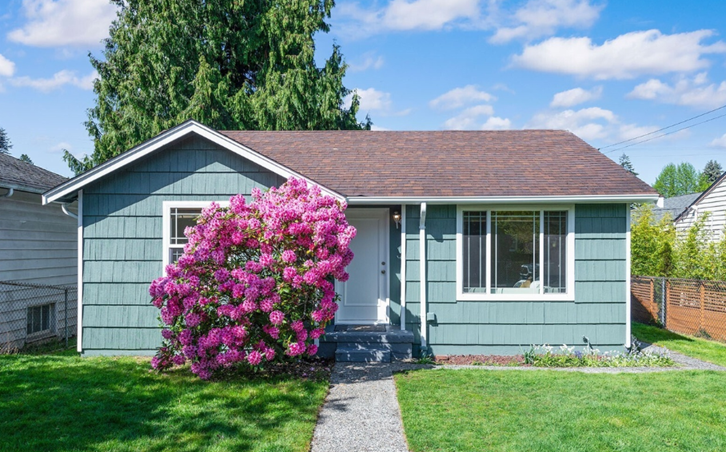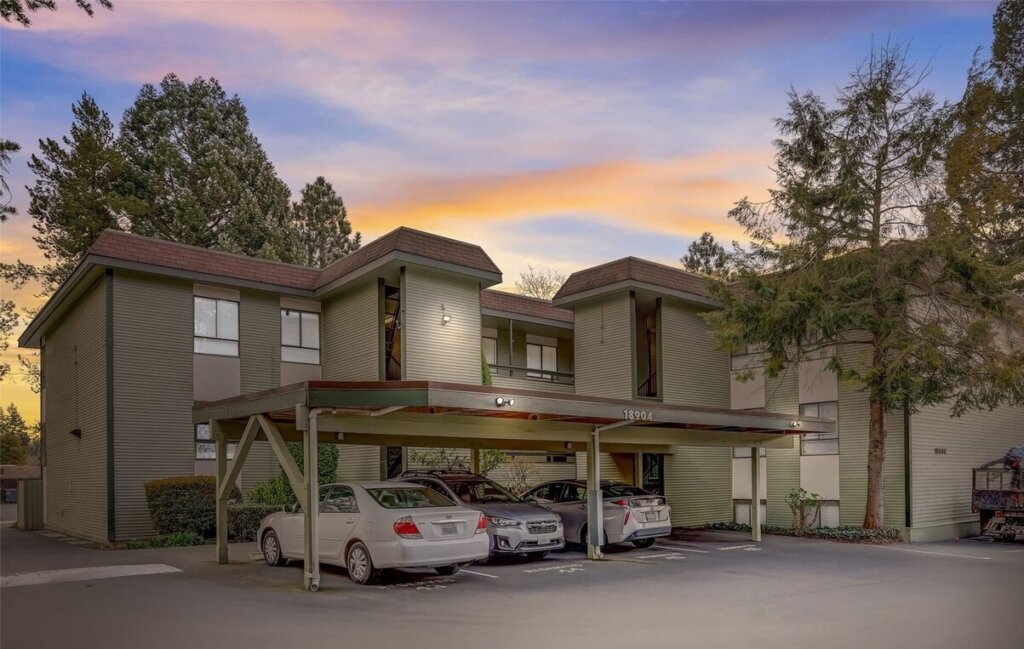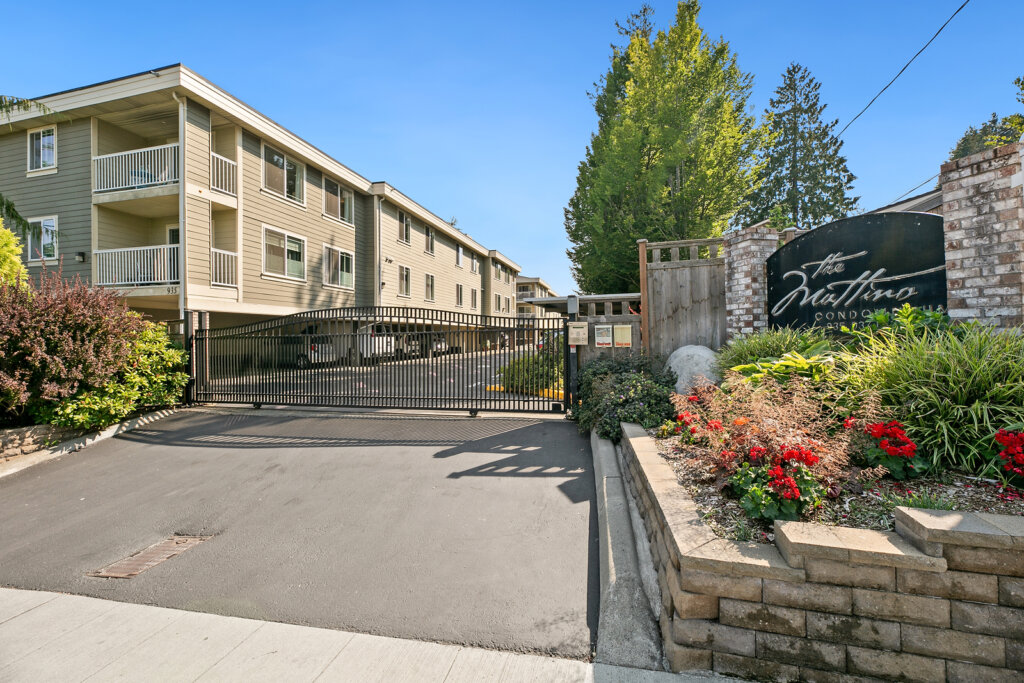How to Cash-Flow Your First Investment Property in Seattle With Mid-Term Rentals
The Cash Flow Challenge in Seattle
I’ve lived in the Seattle, WA area all my life (except for a college hiatus), and I’ve been a real estate investor for more than 20 years. I can tell you that Seattle is a fantastic place to own real estate. Our thriving economy continues to drive appreciation with great jobs, consistent demand, and strong market fundamentals. Whether you’re buying your first property or exploring mid-term rentals, Seattle offers excellent opportunities to build long-term wealth and steady cash flow.
As a real estate agent, I have many potential real estate investment property owners come to me who are working on finding the right property, but have some concerns about getting started with rental property in Washington State.
But let’s face it, our real estate market seems to put every house in high demand and it can feel like we’re in a perpetual seller’s market. It can be tough to get started. If you’re a first-time investor hoping to make POSITIVE monthly cash flow from a traditional long term rental, the numbers are probably not looking great.
High home prices, increased interest rates, and rising property taxes can make it nearly impossible to earn a profit from traditional rental properties with a long-term tenant—especially if you’re buying your first condo or small home. (Plus, Washington State just imposed a cap on rental price increases…. and it’s a very pro-tenant state which can make DIY property management a challenge!)
So what’s a smart investor to do?
The answer might be mid-term rentals—a powerful but often overlooked strategy that balances higher income with manageable effort.

Why Traditional Rentals Aren’t Cutting It Anymore
The Seattle rental market has seen incredible growth in property values—but long-term rental income per month hasn’t kept pace in quite the same way.
Here’s what that means:
Buying a $300,000 condo and renting it out unfurnished for 12 months might cover your mortgage, but barely. And if anything goes wrong—vacancy, repairs, or a rate hike—your cash flow disappears.
The bigger you go with the price of the property, the higher the negative cashflow can become. Many commercial real estate bankers require their clients to put 30-40% of the purchase price down, as a down payment, in order to cover the loan. (Note: This is what the 1031 Exchange can help you with, especially if you’re selling your first house, condo or duplex investment and buying something bigger, like an apartment building, development property, or NNN lease building.)
The traditional “buy and hold” model still works for rental investments, but for first-time investors, the margins are tight. You need a better strategy to make it worth your while.

What Are Mid-Term Rentals?
Mid-term rentals are furnished properties rented for 30 days or longer—typically to people who need housing for 1 to 6 months.
They’re longer than a traditional vacation rental stay, but shorter than a traditional 1-year lease. This makes them ideal for traveling nurses, remote workers, families relocating, or people in transition. I have had insurance agents contact me about furnished rentals, in the past, because sometimes they have a family displaced by a house fire or flood, etc. and they need to find a place to house them more permanently than in a hotel or similar short term rental options.
Because of the flexibility and convenience, these tenants asking for mid-term stays are willing to pay a premium.
And you, as the landlord, enjoy better returns and fewer turnovers.
Who Rents Mid-Term? (Your Target Market)
Once you understand mid-term rental demand for this type of home here in Washington State, you can get a better idea of why (or why not) this type of rental property management model could be a good fit for you as a full-time working professional, looking for a low-time-commitment side hustle and cash flow that will have a positive effect on your rental returns.
Your ideal mid-term tenant is:
- A traveling nurse on a 13-week hospital assignment
- A tech contractor working a short-term gig
- A family moving to Seattle, still house-hunting
- A student in a semester-long certification program
- A doctor, here studying under a specific department or surgeon in the hospital
- A professional dealing with life transitions (divorce, remodeling, etc.)
They’re typically financially stable, low-maintenance, and just looking for a “home base” while they’re in town.

Case Study: $300K Shoreline Condo Investment with Cash Flow Potential

Let’s break this down with a real-life example:
You purchase a condo in Shoreline, WA for $300,000.
- Down payment: $60,000 (20%)
- Loan amount: $240,000
- Mortgage (6.5% interest): ~$1,518/month
- HOA: $500/month
- Taxes and Insurance: $300/month
- Total cost: ~$2,318/month
Now let’s look at potential income:
- Traditional rental: $1,900/month → ($418/month) NEGATIVE cash flow
- Mid-term rental (furnished): $2,700/month → $382/month POSITIVE cash flow
This one decision—going mid-term instead of long-term—can change your bottom line entirely.
But remember – you do have more costs and more risks to your steady rental income when you invest with a mid-term rental strategy.
- You have to invest in furniture, a coffee pot and TV to make the place homey.
- You’ll have to do a deep clean after each tenant leaves.
- You have more risk of vacancy because rental demand goes down in Seattle over the winter when there are fewer visitors here.
- You’ll have to make sure the HOA allows short- or mid-term tenants and doesn’t have a rental cap.
Crunching the Numbers: Traditional vs. Mid-Term Rental Income
Let’s compare side by side:
| Rental Type | Income | Expenses | Cash Flow |
|---|---|---|---|
| Long-Term (Unf.) | $1,900 | $2,318 | -$418/mo |
| Mid-Term (Furn.) | $2,700 | $2,318 | +$382/mo |
Over the course of a year, that’s an extra $8,000+ in your pocket. For many first-time investors, this is the margin that makes the difference between getting their foot in the door on with an investment strategy that’s viable.
Setting Up a Mid-Term Rental: What You Need
Getting started does require some upfront work. When I set up my first luxury short-term vacation rental in Arizona, I went all out and hired an interior designer who sold me $25,000 worth of furniture.
Trust me, that place looks great—but for a simple mid-term rental in busy cities like Seattle, you don’t need to furnish it with arcade games, ping-pong tables, or giant bean bags. A clean, functional space with thoughtful touches is all it takes to attract quality tenants and start generating steady cash flow.
Let’s look at a realistic budget for furnishing the home.
- Furniture: Budget $5,000–$7,000
- Utilities: Most landlords include power, water, and internet. ($300/month)
- Cleaning: After each stay ($500 every 1–3 months)
- Listing Photos: High-quality images are a must. ($500 – one time fee)
- Lease Terms: Use a clear rental agreement or furnished lease template. You can get this through your advertising hub (like Air BNB, or through a local attorney. I have had good luck with the documents that allow me to self-manage my investment properties at TurboTenant.com)
This is a one-time setup for most investors. Once you’re live, you’ll just manage bookings and turnovers every few months.

Pros and Cons: Are Mid-Term Rentals In Seattle The Right Strategy for You?
Pros:
- Higher income than traditional leases
- Fewer turnovers than short-term rentals
- Attractive to low-drama tenants
- Great entry point for DIY investment opportunities
Cons:
- More work than a 12-month lease
- Furnishing costs upfront
- Occasional gaps between tenants
- You’ll need to market and manage actively
- Seattle condos that allow short-term rentals can be harder to find.
This is a side hustle, not a “set-it-and-forget-it” passive investing model.
But if you want to build wealth and cash flow faster, it’s worth the extra effort.
Where To Advertise Your Mid-Term Rental
Let’s say you have a beautiful home, condo, or downstairs apartment all set up and ready to go—you’re eager to flip the switch and welcome tenants. But the big question is: how do you actually go about finding renters for your short-term rentals or mid-term rentals?
This is where strategy makes all the difference. The platforms you choose, the way you market your property, and even how you price it will determine whether you attract a steady stream of tenants and create reliable cash flow—or whether your place sits empty. From listing sites like Airbnb and Furnished Finder, to networking with relocation specialists, to leveraging local demand from traveling professionals and families between moves, there are proven ways to keep your rental occupied and profitable.
Here are the best places to market your property:
- Furnished Finder – Ideal for traveling nurses
- Airbnb (30+ day stays) – For professionals, digital nomads
- Zillow Rentals – For visibility to local movers
- Travel Nurse Housing – Sister site of Furnished Finder
- Facebook Groups – “Travel Nurse Housing – Seattle” etc.
Each platform has its quirks, but Furnished Finder is the easiest and lowest-cost for monthly stays.
You can test the free platforms, such as facebook, but at the end of the day, you want to be where people are looking, and you may have to test a few different options to find out where that is.
I like Zillow, because it’s free and easy to worth with, and also seems to have a good amount of traffic, but if you’re targeting shorter term stays, platforms like airbnb and VRBO are still the best. They can apply to rent, right on the website, and you can say when the property will next be coming availble.
I’ve also been with Furnished Finder before, and gotten a steady stream of inquiries, but there’s more back-and-forth chat with tenants, so there’s more work to sort out the serious people.
Typically, the shorter the stay – the more work, and the higher the rent while they’re there… but also the more risk that you’ll have vacancy, especially in those dark and wet winter months in the off season.

How to Protect Yourself from Tenant Risk
Protecting your investment is key, and there are some tricks with a short term rental investment that make it different from other traditional long-term rentals.
The state of Washington and the city of Seattle heavily regulate rentals and lean on protecting tenants, so make sure you know the rights and responsibilities when you operate a short term rental business.
- Use deposits and rental agreements – get everything in writing and paid upfront.
- Document unit condition with photos and videos – You can provide tenants a checklist when they move in, or do a video tour with them, to document any pre-existing damage.
- Consider short-term landlord insurance
- Airbnb offers $3M in AirCover for damage and liability
- Furnished Finder allows background checks and lease customization
You’ll want to screen applicants, clarify expectations, and keep communication professional. Most mid-term tenants are respectful and just want a safe, clean place to stay.
Marketing Tips to Maximize Your Cash Flow and Returns
When you have a property for short or mid-term rent, chances are your tenants won’t have a chance to visit it in person before they decide to rent it. In fact, they will be primarily depending on shopping online.
That means, the more you can show-and-tell what the property is like, and give them a realistic expectation of what they will find when they get there, the better!
Utilize photos, videos and descriptions to ensure you can operate your short-term rental profitably!
- Stage for photos – Put your best foot forward with your furniture and decor, and still make it representative of how the home will be offered when tenants arrive. Professional photos that correct for lighting and use a wide-angle lens are an excellent investment here.
Best practices suggest making the decor “neutral, clean, modern,” or else working with a theme such as a “beach house” with beach-themed decor, or “family reunion house” with many activities for kids, like arcade games, a ping-pong table, and bikes you can borrow to ride around the neighborhood. Remember, most tenants will not see the home in person before committing to the lease, so the photos are what sell it! - Write a strong listing description – In some areas, short-term rental opportunities are abundant. If you have a fairly generic type of property, like condos in Seattle, you might want to find ways to differentiate your property from the competition.
If you have a professional rental management company, they can help you with this, but make sure if you are charging a higher rental amount than your competition that there is something awesome about your property that other homes don’t have – for example, a great view, access to a gym, or daily cleaning services. Rentals that allow pets can also put your property in a league of its own.
In your rental description, highlight location, flexibility, and proximity to Seattle’s best amenities. Look at other listings on the platform and see what they are emphasizing. Don’t copy, but learn from others and talk up where your home shines, and be honest about it’s short-comings. You want tenants to be happy, and not feel like they were caught in a bait and switch. - Include all utilities + Wi-Fi – This is a huge selling point. In short and mid-term rentals, no one wants to mess with turning the power on-and-off in their name. I would say this is imperative if they are staying for less than 6 months.
- Respond fast to inquiries – Good tenants go quickly. Your customer service will help determine whether they feel they can trust you and will be safe and well looked after in your property.
- Ask for reviews – Social proof builds trust. If you’re just getting started, maybe some friends and family can take a look at your unit and offer their opinions. If lacking that, start with a low price to be competitive and keep your property full.
- Price For Your Market – Consider seasonal adjustments to pricing. You’ll have more interest in the beautiful summer months, and less in the winter, so your pricing can go up-and-down depending on when the tenants want to come.
Offer lower prices for longer stays. Someone that wants to live in the home for 8 months might get a better lease rate per month than a tenant who only wants to be there 1 month. - Keyword Searchability: Make sure to include hospital names, universities, or job centers in your listing title, especially if you think people may be coming to work in these employment centers. This helps travelers find you in search.
Frequently Asked Questions About Mid-Term Rentals
Q: How long do mid and short-term tenants usually stay?
A: Most stay between 1 and 3 months. Traveling nurses often do 13-week contracts. However, if you can be flexible in offering different lease lengths, you will open yourself up to more opportunities. Typically I charge more per night for shorter-term rentals, and more for longer stays.
However, you may also consider charing more during Seattle’s beautiful summer months and less during the wet and cold winter. Ideally, you can ensure the property stays full and tenants get a good value, making sure it becomes one of the best rated homes in the field.
Q: Can I still use a property manager?
A: Yes, but many investors manage mid-term rentals themselves to keep more rental income but also save money on the costs. Be alert that managers who lease furnished and shorter-term rentals often charge more than the 10% you might expect on long term lease.
Seeing 40% of gross rents charged by property managers who focus on short term vacation rentals is not unheard of. There is a lot of work in pricing, leasing, customer service, and cleaning the unit thoroughly and quickly between tenants. So having a good crew on hand to help with the labor, or being that labor yourself, can work, but this side hustle can become time-consuming if you travel frequently yourself or are busy with other work and family obligations.
Q: Can HOA’s or cities block me from renting?
A: HOA’s: Yes! Some have condominium complexes have rental restrictions and can block property owners looking to maximize their rental income due to short-term rental regulations.
Make sure you read your Condominium rules before you purchase a property you plan to use to invest in real estate. Minimum tenancy requirements such as the tenant must stay 1-year minimum, or the owner must have lived in the house for two years before turning it into a rental.
Larger cities like Seattle have not had regulations blocking Air BNB’s, but smaller cities that tend to have tons of tourism, like Leavenworth, WA, do have restrictions.
Things are always changing so make sure you check local regulations—mid-term (30+ days) stays are legal in more places than nightly Airbnb-style rentals.
Q: Do I need a business license to operate a short or mid-term rental?
A: Possibly. Check with your local city or county to stay compliant.
Conclusion: Your First Step Toward Cash-Flowing Real Estate
If you’ve been sitting on the sidelines, thinking you can’t cash flow your property in Seattle due to rental rates that are too low compared to high property sales prices, this is your wake-up call.
Short- and Mid-term rentals offer a way to make your first investment work, and this business model can be a good solution for rental property owners if there is sufficient rental demand. Mid term rentals can be the best of both worlds – improving cashflow without crazy turnover, expensive remodels, or over-leveraging yourself.
Want help getting started? That’s what I’m here for.

At HomeProAssociates.com, we help first-time investors find the right property, run the numbers, and learn the strategy step-by-step. Let’s find you a condo, town home or boarding house, build you a plan, and turn your side hustle into serious results.
📞 Ready to explore your options?
Contact me today to book a 1-on-1 investment consult.
How Can We Help You?
We would love to hear from you! Please fill out this form and we will get in touch with you shortly.


